Blacklip-greenlip cross has unique appearance, meat traits
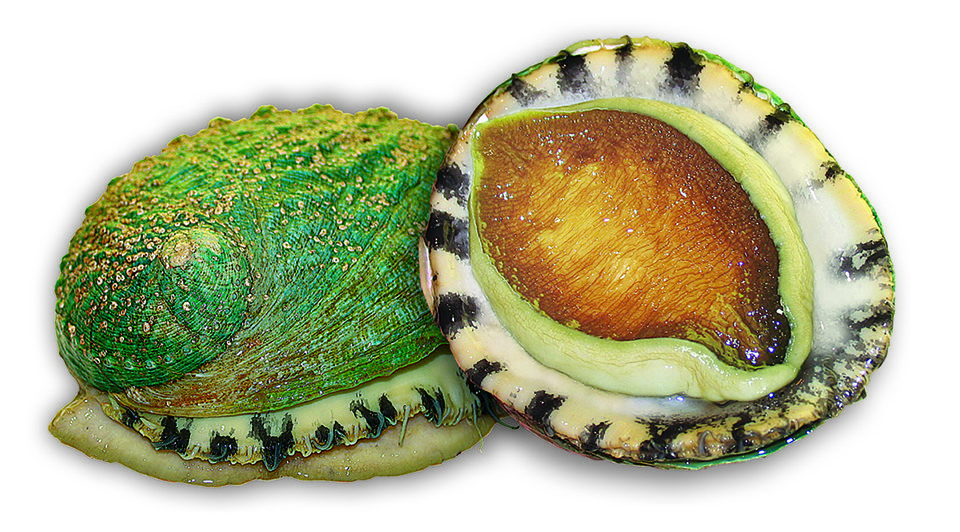
Abalone aquaculture as a global industry is relatively unique with over a dozen different species farmed. Each species has a restricted natural distribution and distinctive morphological and quality traits.
The global demand for abalone remains high, particularly in China and Southeast Asia, and is growing in western cultures. This demand is being met through increased farm supply from many countries, including China, South Korea, South Africa and Australia.
Australian abalone
Abalone aquaculture in Australia is focused on two local temperate species: the blacklip (Haliotis rubra) and greenlip (H. laevigata) abalone. Both species have well-managed and valuable wild harvest fisheries along the coastlines of the southern states of Australia.
The two species have individual characteristics that make them acceptable in different export and domestic markets, and in different product forms. For farming, however, the blacklip is less desired due to its unfavorable behavioral and grow-out traits in the existing tank systems and current farm populations. The greenlip abalone and the first-generation hybrid between the two species are the favored farm products.
Abalone farming both locally and globally does not have a standard growout system, but many Australian land-based farms use the “slab tank” system. Its basic design incorporates fast-flowing water that moves just over the tops of the abalone shells, with the tanks located in semishade or full darkness. All abalone farmed in Australia are grown out on formulated feeds after a nursery phase on settlement plates with natural algal films.
With a small domestic market for abalone, Australia’s wild and farmed harvests are mainly for the export market. A variety of product forms, including live, frozen and canned, are shipped to restaurants and hotels in Dubai, Thailand, Japan, Singapore, Hong Kong and China.
Great southern waters
Located near the city of Melbourne, Victoria, Great Southern Waters is Australia’s foremost abalone farm, producing over 150 metric tons (MT) annually. It includes a bio-secure hatchery and nursery, grow-out and export facilities. The main grow-out facilities consist of 400 tanks covering an area of 20,000 square meters.
The premium product from Great Southern Waters is Jade Tiger Abalone (JTA). It is based on hybridization between the blacklip and greenlip abalone species, with genetic selection for its unique appearance meat characteristics and faster growth rate. Such traits are enhanced and maintained through a selective-breeding program developed by Great Southern Waters in collaboration with the Australian Commonwealth Scientific and Industrial Research Organization (CSIRO).
The initial objectives of the collaborative research and development were twofold. The first was to establish a closed, genetically diverse and healthy breeding population with a secure data capture and management system. This became commercially critical, given the lessons learned after the outbreak of abalone viral ganlioneuritis in wild and farm populations in Victoria and the tighter government restrictions imposed on the collection of wild broodstock.
The second objective was to design and implement a breeding strategy to produce and improve commercial stocks with the required traits. In order to make a decision on which strategy to follow, there was a need to understand the inheritance of those commercial traits in the pure species and the hybrid.
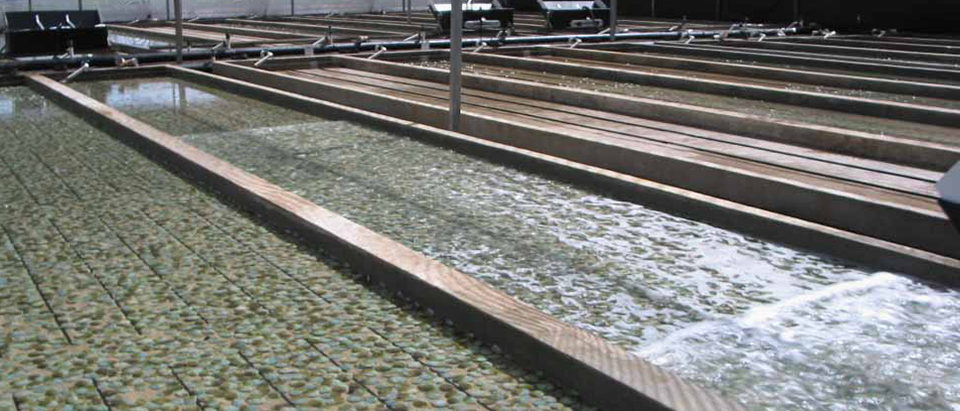
Hybrid breeding strategy
The blacklip and greenlip species are genetically closely related and known to naturally hybridize. In the hatchery, the more efficient hybrid is produced using a blacklip female and greenlip male, but the reciprocal cross also works. Resulting hybrids from both crosses are fertile, and back-crossing with the pure species has been observed in wild populations.
While heterosis or hybrid vigor has been observed and is being commercially exploited through deployment of the first-generation (F1) hybrid between the blacklip and greenlip species, it is unclear whether the long-term strategy should be based on advanced generations of the hybrid as a composite breed or the F1 hybrid.
The simplest option is to form a single population by crossing hybrids with hybrids through advanced generations, thereby creating a composite or new breed. For this to be practical, the F1 hybrid advantage needs to be retained and improved in advanced generations.
Anecdotal data suggests an F2 hybrid population is outperformed by an F1 population, implying this would not be a good strategy. However, poor performance in an F2 population is not unexpected with hybrid or crossbreeding. Genetic stability, and so uniformity and improved performance, is usually only achieved after multiple hybrid generations. Great Southern Waters has established advanced generations of the JTA hybrids, and their relative performance will be assessed in the coming years.
Parent performance
To address the potential advantages and disadvantages of improving a commercial population through the F1 hybrid requires understanding of the relative performance of an individual as a parent for a pure species family compared to that as a parent for a hybrid family. A breeding experiment has been established at Great Southern Waters with approximately 200 pedigreed families from 150 blacklip parents and 150 greenlip parents to gain this knowledge.
The research was designed to answer whether a pure-species recurrent or reciprocal recurrent selection program would be suitable for abalone. In the experiment, the performance of blacklip females was compared when producing a blacklip family or a JTA hybrid F1 family. Likewise, greenlip males’ performance was compared between a greenlip family and a JTA family.
Early results from the family-crossing experiment showed only a weak, non-significant genetic correlation between the pure species and hybrid families. In other words, selection of an individual based on its pure species performance may not result in an improvement in the F1 hybrid using the individual as a parent.
To maximize genetic gain in the F1 hybrid population, it may be necessary to select an individual on its pure species family and hybrid family performances in reciprocal recurrent selection. Note that these early results may be influenced by extraneous factors that will be reduced with more data.
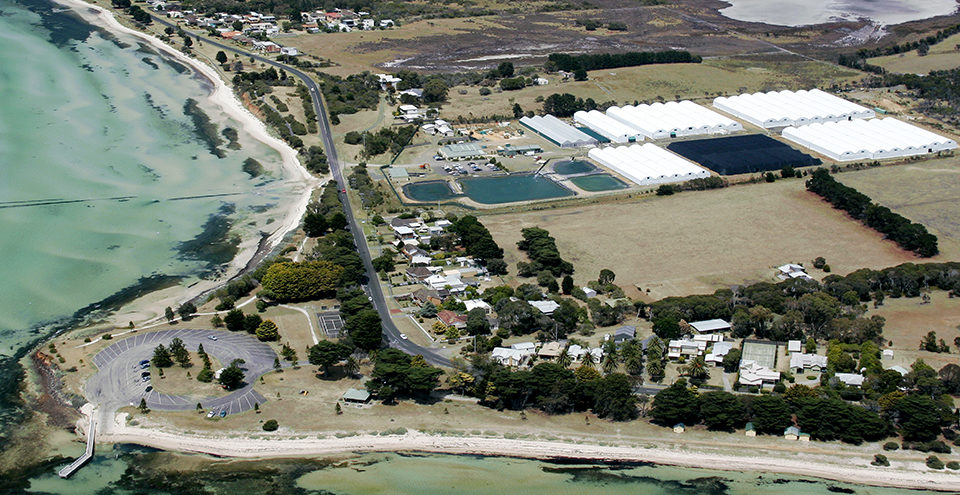
Next steps
Additional data will provide more precise information on the genetic architecture of the pure species and the JTA. This includes examination of the non-additive genetic effects associated with hybridization and improving estimations of genetic parameters such as trait heritability and genetic correlations between traits, as well as genetic gains for the JTA traits.
Economic traits being considered by CSIRO and Great Southern Waters include growth, product quality and breeding for disease resistance. These efforts will lead to a scientifically sound breeding strategy for the further enhancement and sustainability of the commercial production of JTA.
(Editor’s Note: This article was originally published in the March/April 2010 print edition of the Global Aquaculture Advocate.)
Authors
-
Dr. Nick Elliott
CSIRO Food Futures Flagship
CSIRO Marine and Atmospheric Research
GPO Box 1538
Hobart, Tasmania 7001, Australia[117,97,46,111,114,105,115,99,64,116,116,111,105,108,108,101,46,107,99,105,110]
-
Anton Krsinich
Great Southern Waters
Indented Head, Victoria, Australia -
Luke McPherson
Great Southern Waters
Indented Head, Victoria, Australia -
Peter Kube
CSIRO Food Futures Flagship
CSIRO Marine and Atmospheric Research
GPO Box 1538
Hobart, Tasmania 7001, Australia -
Matthew Hamilton
CSIRO Food Futures Flagship
CSIRO Marine and Atmospheric Research
GPO Box 1538
Hobart, Tasmania 7001, Australia
Tagged With
Related Posts
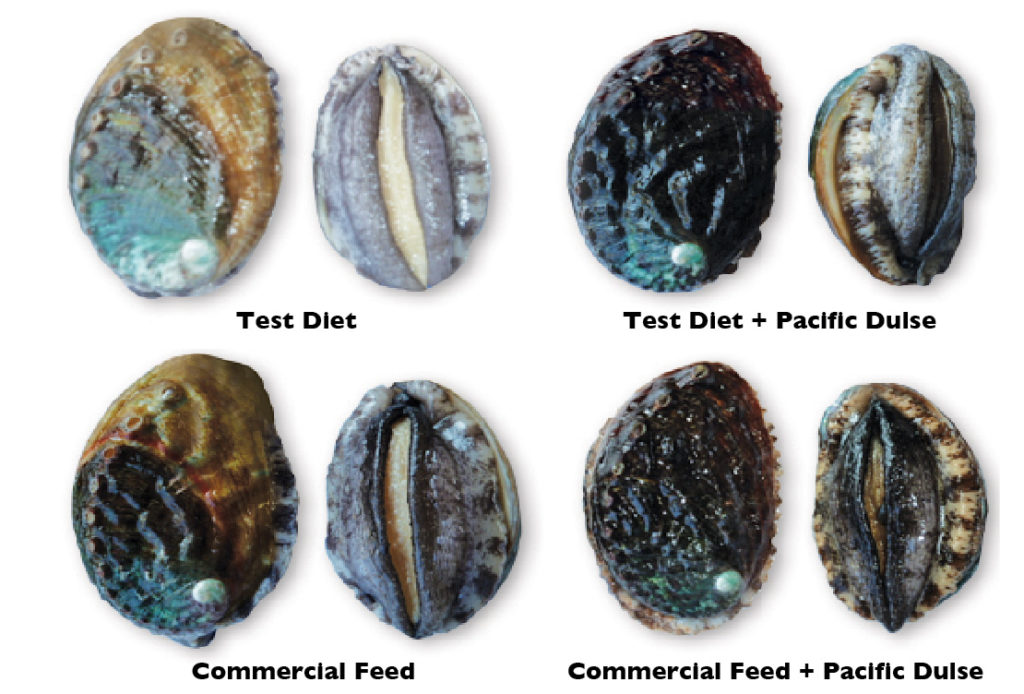
Health & Welfare
Diets affect abalone meat quality, shell color
A preliminary study investigated the effects of diet on the meat quality and shell color of Pacific abalone. A test diet and a commercial abalone feed resulted in lower meat protein content compared to that achieved with a diet of Pacific dulse seaweed. The artificial diets also caused the abalone to have yellow or orange shells. The seaweed diet alone resulted in abalone with dark-brown shells. However, a combination of seaweed and either artificial diet improved abalone growth, meat quality and shell color.
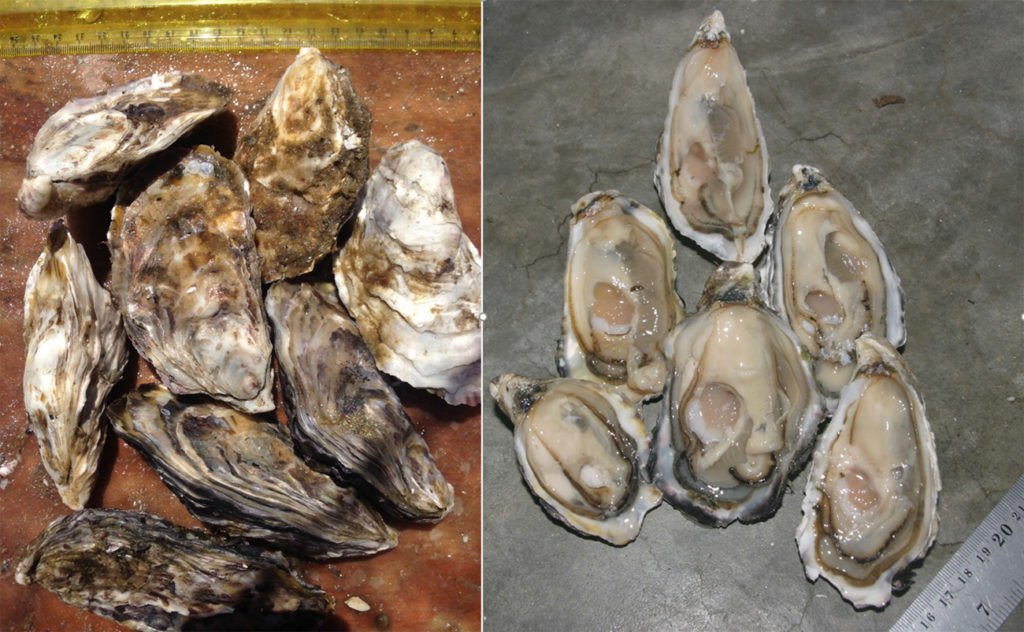
Intelligence
An emerging shellfish farming industry in Namibia
For shellfish farming in Namibia to continue expanding, industry must better comply with approved sanitation standards. The Namibian Shellfish Monitoring and Sanitation Program, currently in development, will help.
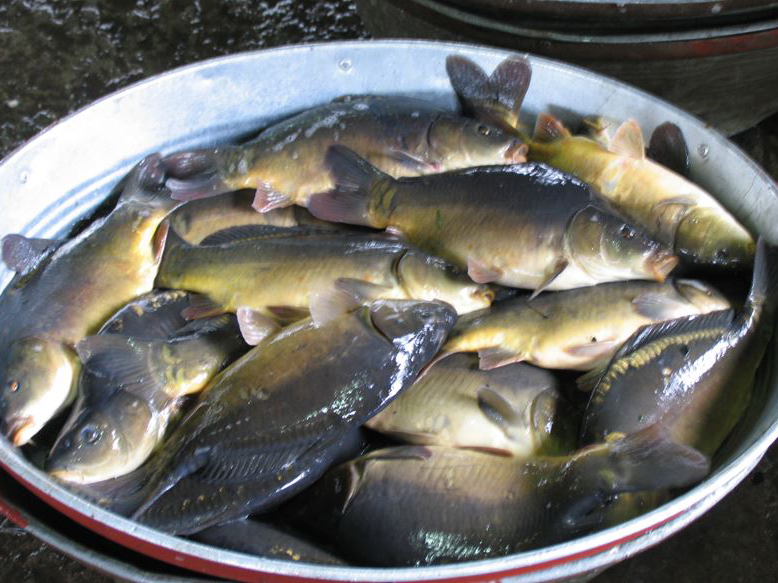
Health & Welfare
Barcoding, nucleic acid sequencing are powerful resources for aquaculture
DNA barcoding and nucleic acid sequencing technologies are important tools to build and maintain an identification library of aquacultured and other aquatic species that is accessible online for the scientific, commercial and regulatory communities.
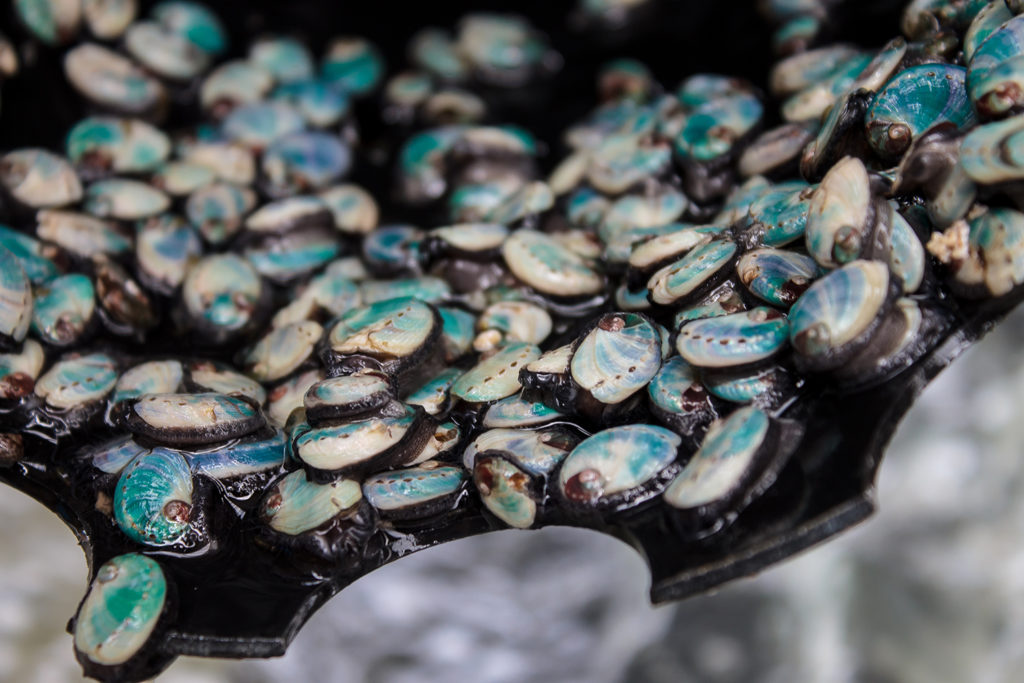
Responsibility
In South Africa, abalone farming goes for gold
Poaching has plagued South Africa’s abalone to the point of decimation. Aquaculture is putting the shellfish back in the water, and back on menus.


